If your parent company is home to more than one brand, then a multi-storefront eCommerce website can help you increase traffic and revenue.
How?
A multi-storefront website allows you to manage multiple brands all from a single admin. This means that all storefronts have a common database — you can use one shopping cart across multiple stores — yet, you can still customize each storefront to maintain its own branding.
In turn, you’ll drive traffic and scale your business while reducing costs.
Here we’ll dig into the benefits of a multi-storefront website and how top platforms like BigCommerce are teaming up with apps to boost this cutting-edge technology.
Table of contents
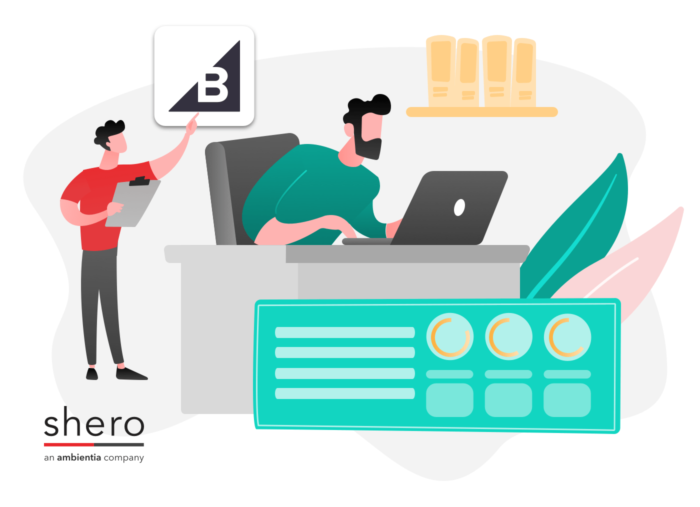
What is a multi-storefront eCommerce store?
To put it simply: A multi-storefront refers to one website that houses multiple brands.
There are a few scenarios that could benefit from a multi-storefront approach.
- Businesses that want to scale and increase conversions in new regions with localized storefronts
- Parent companies that want to increase efficiency for operations and sales around a family of brands
- Companies with multiple brands that fall under different business model segments — B2B, D2C, and so on
- A merchant who wants to streamline operations of multiple brands under one admin while increasing brand awareness to new demographics
Gap, Inc. is a great example; on their website, you’ll find tabs that lead to the storefronts of the entire Gap family, including Banana Republic, Athleta, and Old Navy.
Children’s apparel brand Carter’s is another good example of a multi-storefront eCommerce website. You can navigate to the family of brands (Oshkosh, SkipHop, Little Planet) and add products from each store into the same cart.
As another example, we built a multi-storefront on Adobe Commerce for our client Justrite.com and their family of brands.
Benefits of a BigCommerce multi-storefront eCommerce website
Recently, BigCommerce launched their multi-store capability with a full-out campaign touting how this type of store setup can expand your business’s reach, broaden your demographic base, and allow you to manage it all from one place.
A multi-storefront approach allows you to build a stronger brand by merging audiences while keeping storefronts separate.
You’ll also reduce operational costs and increase efficiency by managing each store on the same dashboard, reducing the number of integrations your website relies on, and by reducing the need for ongoing maintenance.
You can choose to customize and operate stores on BigCommerce’s Stencil theme — one of BigCommerce’s most popular themes — or by a third-party headless front-end.
According to BigCommerce, from a single BigCommerce dashboard, you can:
- Create and manage multiple storefronts
- Build unique categories and make products available on one — or multiple — storefronts
- View and manage customers and orders
- Keep track of storefront analytics and important data insights
- Personalized ecommerce for all
Across each storefront, you’ll unlock capabilities to:
- Customize themes, widgets, scripts, social links and pages
- Set or change the default currency
- Personalize transactional emails and manage newsletter subscribers
- Build custom pricing with price lists and customer groups
- Create unique product filtering options and apply custom templates
- Connect a distinct domain and SSL certificate
BigCommerce vs Shopify — Which is better?
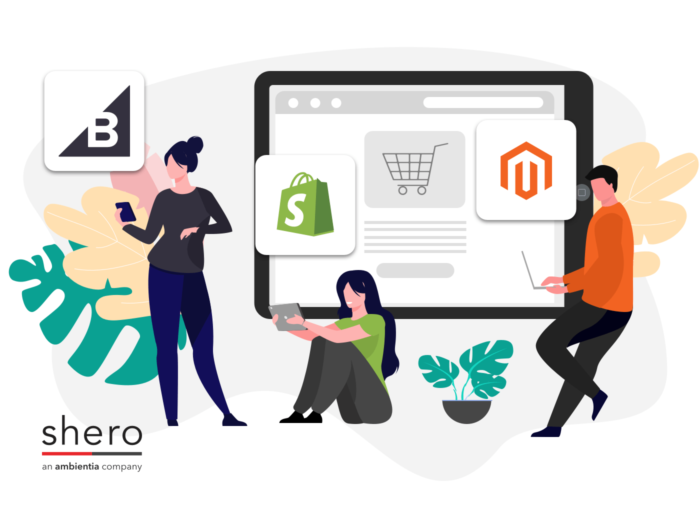
At Shero, we consider ourselves “platform agnostic”, meaning, we see benefits in various eCommerce platforms and believe that each online business has a unique need. When it comes to eCommerce, one size does not fit all.
We love Adobe’s powerful features and scalability and Shopify’s user experience and customizability. When it comes to BigCommerce, many clients benefit from the simplified workflow and omnichannel opportunities available; view our BigCommerce services to learn more.
When it comes to Software as a Service (SaaS) platforms, the big question tends to be, “Which is better, Shopify or BigCommerce. Again, it depends on your unique business needs. But here’s our case for BigCommerce.
Easily Customizable
BigCommerce websites are fully functionable and easy to use out-of-the-box. But there are a suite of tools that development teams and eCommerce agencies can use to customize as you see fit.
Interested in seeing the wide range of customizations you can make? Check out these 7 Examples of Successful BigCommerce Websites
Wide selection of themes
Whether you choose a free or bought theme, BigCommerce’s theme marketplace offers a wide array of themes that can be modified to personalize your customer experience.
App store
Extend your store’s capabilities by integrating a variety of apps that can boost your operations, marketing, reporting, and customer experience.
Native features
BigCommerce’s “Plus” plan includes a ton of useful features, and the higher up in tiers you go, the more advanced reporting and CX abilities you’ll be able to tap into.
Here are some of the native BigCommerce features we love.
Besides multi-storefront: What are some other reasons to use BigCommerce?
1. Unlimited bandwidth
Just like any other store, a BigCommerce website works even better when optimized with clean design and compressed assets. But BigCommerce doesn’t charge for bandwidth use, so you can add as many product listings, photos, or assets as needed.
2. Single-Page Checkout
Single-page checkout streamlines the checkout process by removing steps needed in order for a customer to go from cart to completed purchase. The faster this process, the less of a chance of abandoned cart.
3. Rare downtime
BigCommerce offers top reliability with a 99% uptime rate, so merchants can be assured their site won’t be down during a holiday rush or flash sale.
4. Bulk Pricing
Bulk pricing allows merchants to incentivize purchases at a higher quantity by offering bulk discounts — which is especially useful for B2B sellers with retail and wholesale customers.
5. Ratings and Reviews
Customer reviews and ratings can be a huge benefit for businesses and BigCommerce offers a system that activates on any product page, with just a click. Reviews can be automatically approved or manually reviewed first.
6. Product Swatches
This is a simple yet critical way to enhance customer experience. Allow customers to view a product in various sizes, colors, or patterns via a dropdown, checkboxes, or size selectors.
7. Abandoned Cart Saver
Send automated email communications to shoppers who abandon their shopping cart with Abandoned Cart Saver. You can send a custom message as soon as an hour after cart abandonment.
Learn more about Shero’s email marketing automation services, including abandoned cart messaging and welcome series automations.
8. Persistent Cart
This is a great feature that allows for seamless shopping experiences even if a customer changes devices. Start on a desktop, complete a purchase on mobile, without needing to switch logins or re-add items to a cart.
Now that you understand the various benefits of a BigCommerce store, let’s focus back on the multi-storefront approach.
What apps work on a BigCommerce multi-storefront eCommerce website?
BigCommerce come out-of-the-box with a suite of useful tools, but also integrates with top apps for operations, marketing, shipping, analytics, and more.
Here are 15 apps that work on BigCommerce multi-storefront websites.
1. Klevu
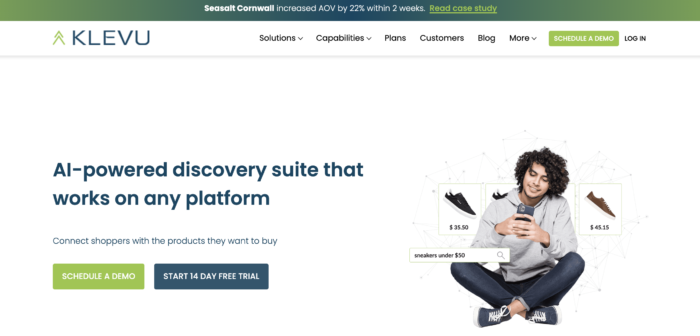
Pricing
- Free Trial: 14 days
- Upfront Fee: Free
- Recurring Fee: $499.00/mo.
Powered by AI, Klevu helps turn search inquiries on your website into sales by streamlining search results and delivering shopping experiences powered by real-time shopper intent.
2. ShipperHQ
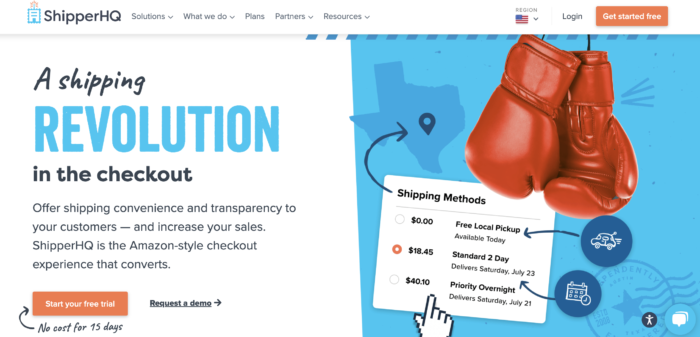
Pricing
- Free Trial: 15 days
- Upfront Fee: Free
- Recurring Fee: $50.00/mo.
The customer experience doesn’t end at checkout, and ShipperHQ allows merchants to build a personalized shipping experience with rates and delivery methods that convert and retain customers.
3. Gorgias
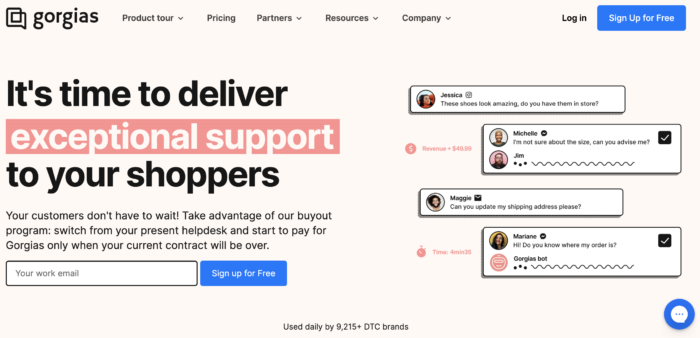
Pricing
- Free Trial: 7 days
- Upfront Fee: Free
- Recurring Fee: $50.00/mo.
This top help desk and live chat service is trusted by more than 30,000 support agents as a way to cut customer support wait times in half while increasing revenue and conversions.
4. Deity
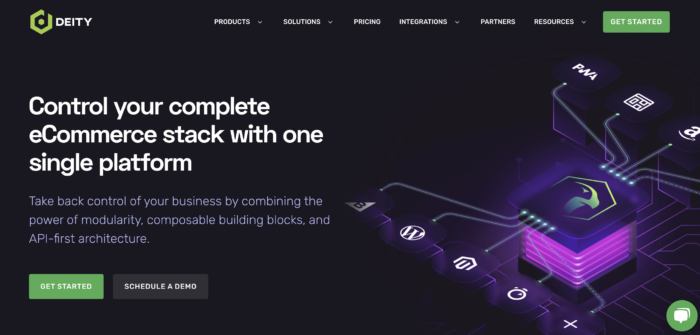
Pricing
Custom Price: €2500/month or €25k/year
Deity provides a highly engaging PWA frontend, which means merchants can offer an enhanced customer experience with offline mode, push notifications, full screen experience, and more.
5. Avalara AvaTax

Pricing
- Upfront Fee: Free
- Recurring Fee: None
Avalara automates merchant tax prep by determining tax jurisdictions, payments, and transactional sales tax.
6. LiveChat
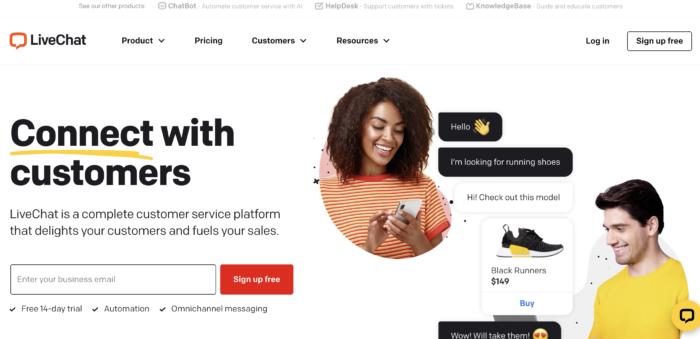
Pricing
- Free Trial: 14 days
- Upfront Fee: Free
- Recurring Fee: $16.00/mo.
LiveChat is a chat widget that allows you to offer real-time customer service, as well as offline messaging and email signups.
7. ShipStation
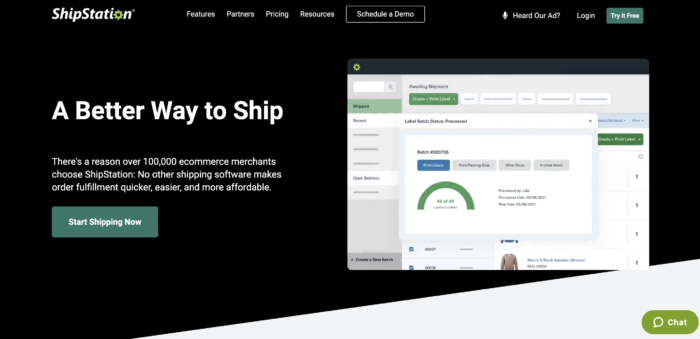
Pricing
- Free Trial: 60 days
- Upfront Fee: Free
- Recurring Fee: $9.00/mo.
Sync shipping updates, integrate with fulfillment, and understand carrier fees with this app designed to streamline your online shipping process.
8. Affirm Marketing
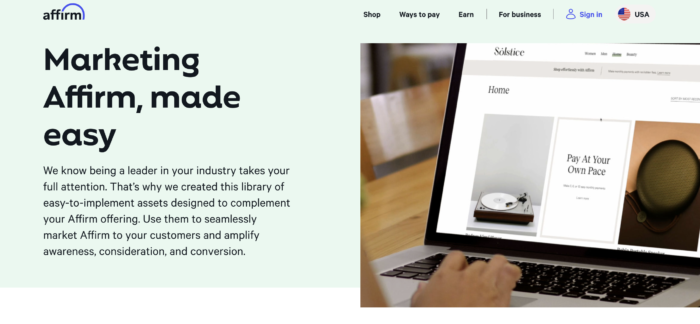
Pricing
- Upfront Fee: Free
- Recurring Fee: None
Existing Affirm merchants can use this app for enabling promotional messaging and enhanced analytics.
9. Codisto
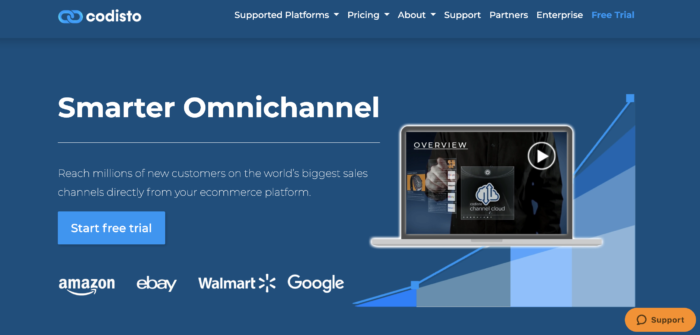
Pricing
Custom Price: Exclusive Free Plan Now Available for BigCommerce Sellers
Codisto is a marketplace listing tool that allows you to sync real-time inventory and pricing with your BigCommerce store for marketplaces like Amazon, Walmart, and others.
10. Payhelm
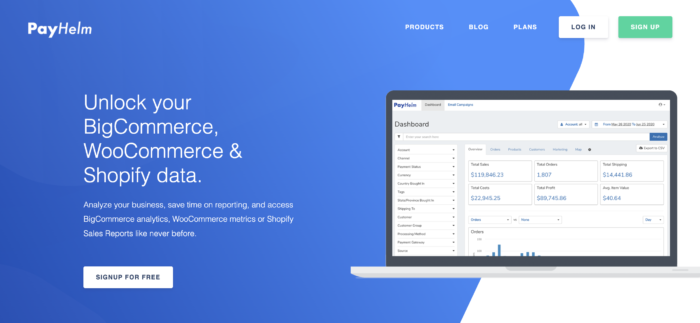
Pricing
- Upfront Fee: Free
- Recurring Fee: None
This data and analytics tool can help review your products by total sales, orders, average price, gateway fees, product cost, profits, and more.
11. InStockNotify
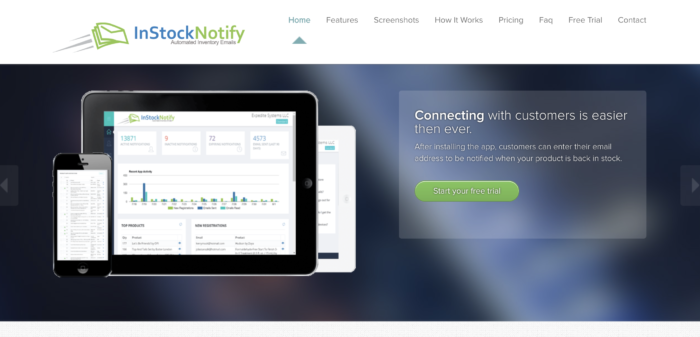
Pricing
- Free Trial: 15 days
- Upfront Fee: Free
- Recurring Fee: $18.00/mo.
InStockNotify allows shoppers to receive an email when an out-of-stock product is available. The app monitors inventory levels and automatically sends an update to the customer.
12. OrderCup
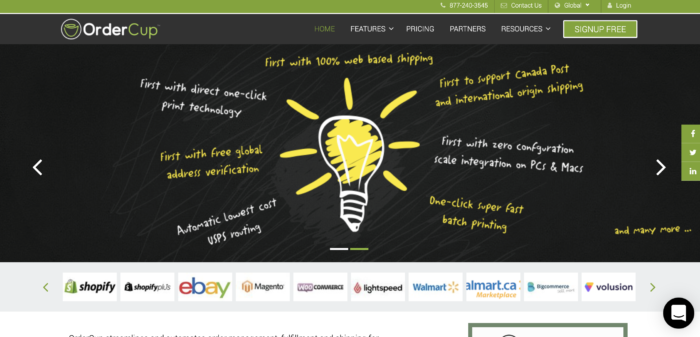
Pricing
- Free Trial: 30 days
- Upfront Fee: Free
- Recurring Fee: $25.00/mo.
OrderCup is a cloud-based fulfillment and shipping app that integrates with both platforms and shipping carriers to automate and streamline your checkout process.
13. Weglot Translate
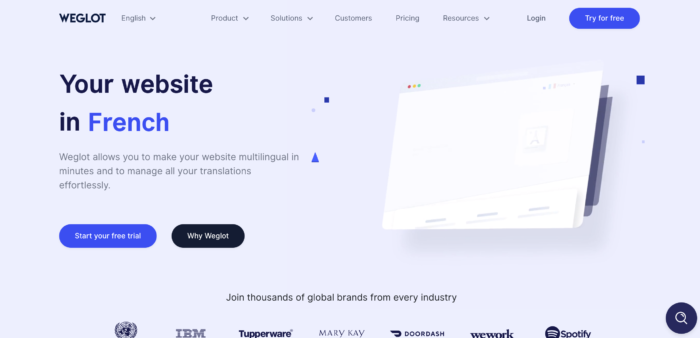
Pricing
Custom Price: Starts at $21/month
Increase your global reach and overall customer experience with this language translation app that can translate your store into 100+ languages within minutes — no coding required.
14. Visual Merchandiser
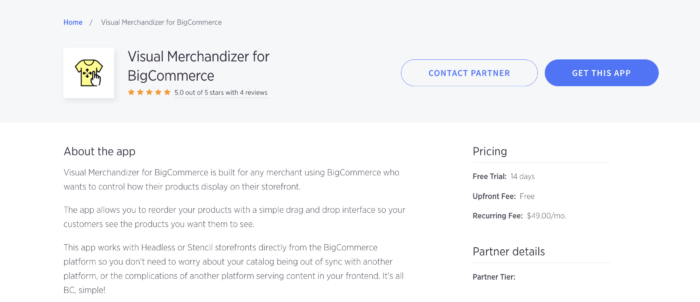
Pricing
- Free Trial: 14 days
- Upfront Fee: Free
- Recurring Fee: $49.00/mo.
This app works with Headless or Stencil-theme storefronts to highlight the products you want shoppers to see most with a simple drag and drop interface.
15. Smart Bar
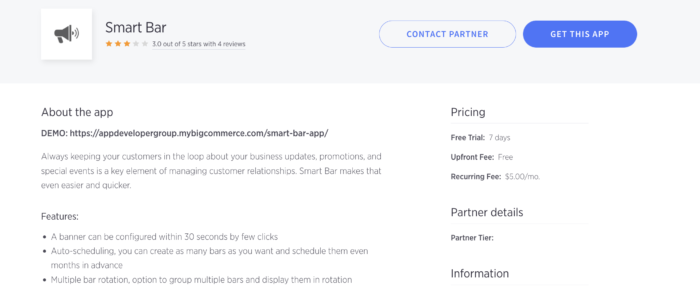
Pricing
- Free Trial: 7 days
- Upfront Fee: Free
- Recurring Fee: $5.00/mo.
Create, target, and analyze countdown timers, announcement bars, welcome popups, and more with this animated announcement app.
View the full list of more than 50 multistore-compatible apps on BigCommerce’s website.
Interested in learning more about building or migrating to a mult-storefront website? Contact us today.
Gentian, CSO and co-founder of Shero Commerce, guides the company and client digital strategies. He's an expert in technical SEO, Inbound Marketing, and eCommerce strategy.






